Travel to Brittany: Cycling and Caravanning on the Polders

I should have a married a man with a string of hotels or at least a man who was profoundly claustrophobic in tin boxes and found anything on two wheels an affront to common sense and general well being.
Instead, I found myself leaving St Malo with a caravan attached to our car– and worse, much worse– two bicycles attached to said caravan…
One of the bicycles, albeit electric, was all mine, a birthday present from a husband with a much keener sense of humour than I’d ever previously given him credit for.
Balance has never been my thing really, and mistaking the accelerator for the brake on my very first outing while trying to avoid a small yapping dog, I went over the handlebars and landed in a ditch with the bike on top of me.
Electric bikes are much heavier than normal bikes so neither of us– moi, nor the bike– returned unscathed. I would have stuck pins in it had it one soft spot, instead I had to make do with casting evil glances as it sat in the garage unused and certainly unloved.
Until…
“Let’s take them to France”, my husband said.
“And leave them there?” I’d replied hopefully. (To rot, be stolen, used as installations, melted down? I was happy with any and all of these agendas.)
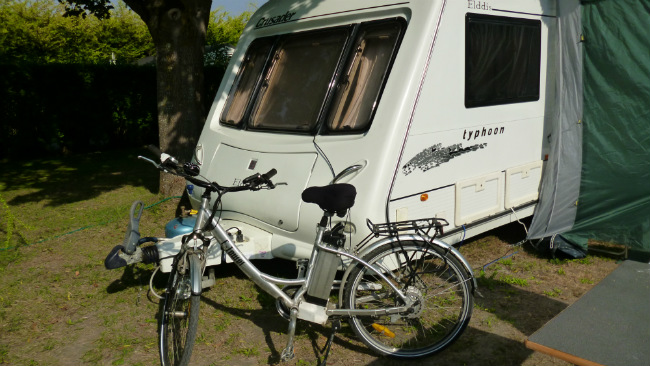
The author’s caravan in Brittany. Photo: Marilyn Brouwer
I’d already, more than reluctantly, succumbed to the idea of a caravan. This was also to remain in France. (To rot, be stolen, you get the idea…) But they would be rotting in my beloved Brittany somewhere between St Malo and Mont Saint Michel, and that was almost enough to banish the horrors and ignominy of our very own, hated installation, the porta potti.
We had already found the perfect (can there be such a thing?) camp site in Roz-sur-Couesnon lying between Cherrueix and Mont St Michel.
The site– with its own restaurant/creperie– was quiet, beautifully kept with large hedged plots, no entertainment or swimming pool, a new toilet and shower block, great owners. In short: a perfect site for grown-ups.
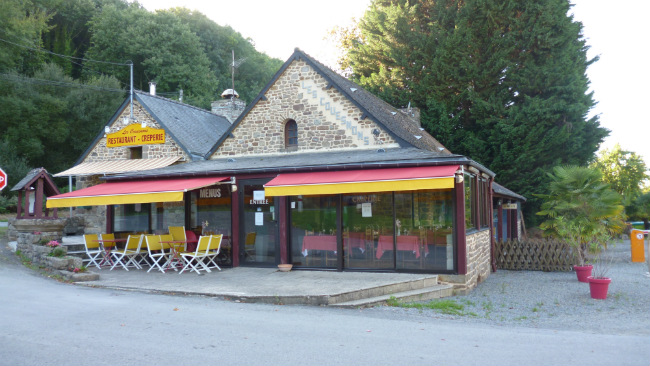
The camping site in Roz-sur-Couesnon. Photo: Marilyn Brouwer
But perhaps the most convincing attribute was the camp site’s situation– right on the edge of the polders.
A polder, in case you aren’t from Holland, is a low lying tract of land enclosed by dykes.
Which means the land is flat. And for a reluctant, lazy, unsteady cyclist like myself, flat is an extremely attractive concept. Add this to a designated walking /cycling track meandering across marshes, through woods and along the coastline of the beautiful bay of Mont St Michel– well I could almost be persuaded to don a yellow vest.
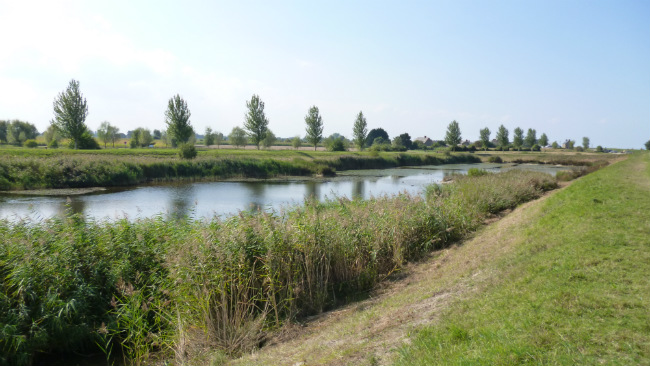
The marsh at La Chapelle Sainte Anne. Photo: Marilyn Brouwer
The cycle track runs from Mont St Michel to St Malo and you will only encounter other cyclists, walkers, the odd horse rider and an abundance of birds and wild life on your way. (Here of course I have to admit to only having cycled the route from Mont St Michel to St-Benoît-des-Ondes. Onwards to Cancale and thence to St Malo the route encompasses obstacles called hills which even with my power-assisted bike, I avoid at all costs– my knees are extremely grateful.)
The polders were developed in Mont St Michel Bay around the 8th century. Sea shell deposits were used to create levées (digues). The southern limit of the polders to the east of La Chapelle Sainte Anne (la digue de la Duchesse Anne) is 20 kilometres long and was built using granite rocks in the 11th century.
In 1856 M. Mosselman was given a concession to cultivate 3,800 hectares of shoreline between St Anne Chapelle and Mont St Michel.
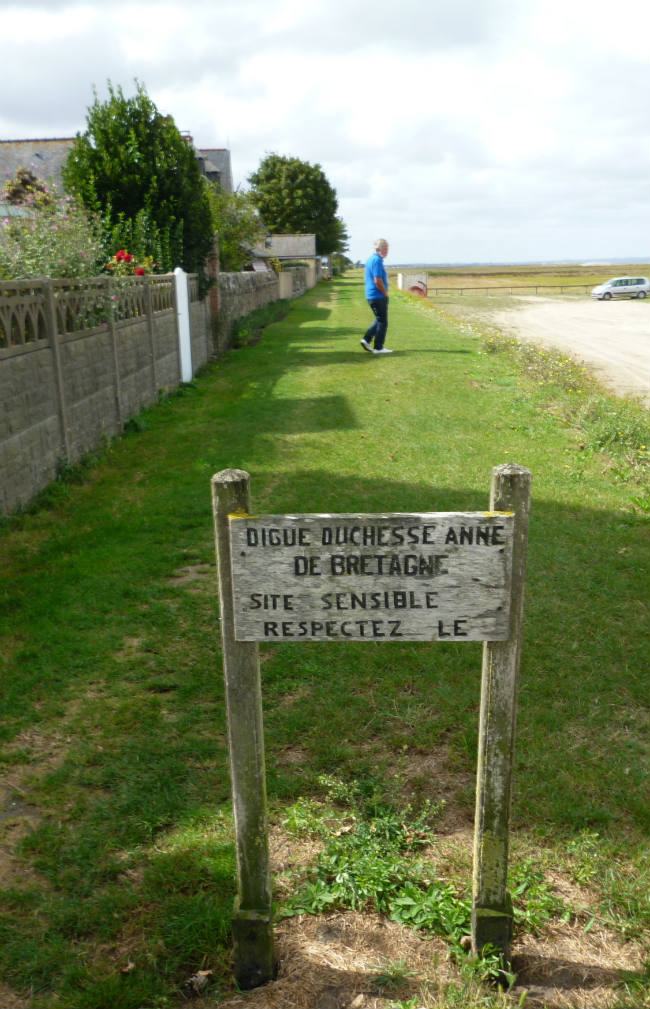
la digue de la Duchesse Anne. Photo: Marilyn Brouwer
From our site in Roz-sur-Couesnon, a narrow, local access road leads to the cycle track. Turn right for Mont St Michel (around 12 kms) or stop off first at Pontorson, a lively town with every amenity and a market day each Wednesday.
(Pontorson also runs a bus service from the train station to Mont St Michel which is a stress free way of avoiding the nightmare of the car parks there and a great excuse to ditch the bikes…)
Pontorson to Mont St Michel is about 10kms following the rather muddy Couesnon river but affording brilliant views of the countryside and the Mont on the way. And still flat as your hat!
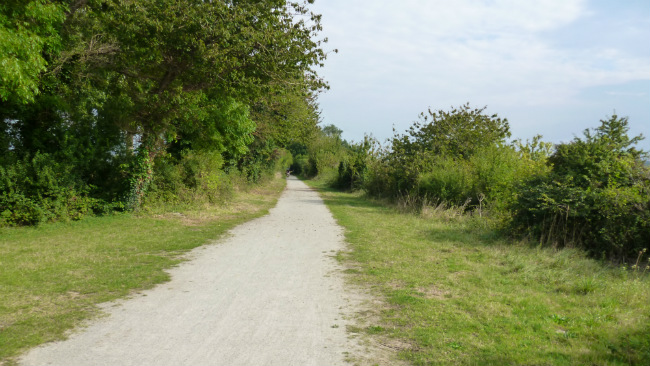
The track through the woods. Photo: Marilyn Brouwer
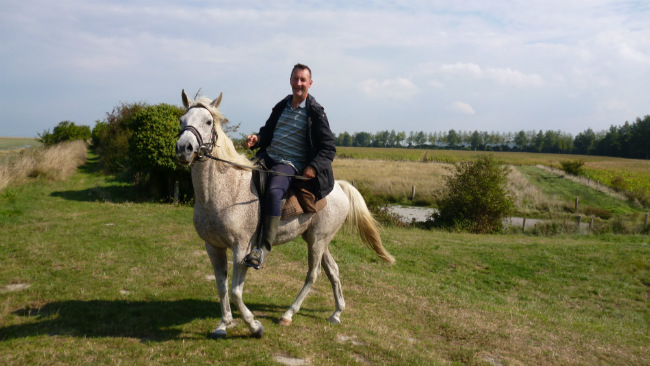
Horse riding on the track. Photo: Marilyn Brouwer
Turning left from our camp site, the track wanders through the woods until bursting out at La Chapelle St Anne and the sea. The quality of the light across the long, low horizon is unique and an artist’s paradise. A marshy stretch of water in front of the chapel is the home of nesting water hens. The cycle way then follows the sea and through the pretty villages of Cherrueix, Le Vivier sur Mer, Hirel and St Benoit des Ondes.
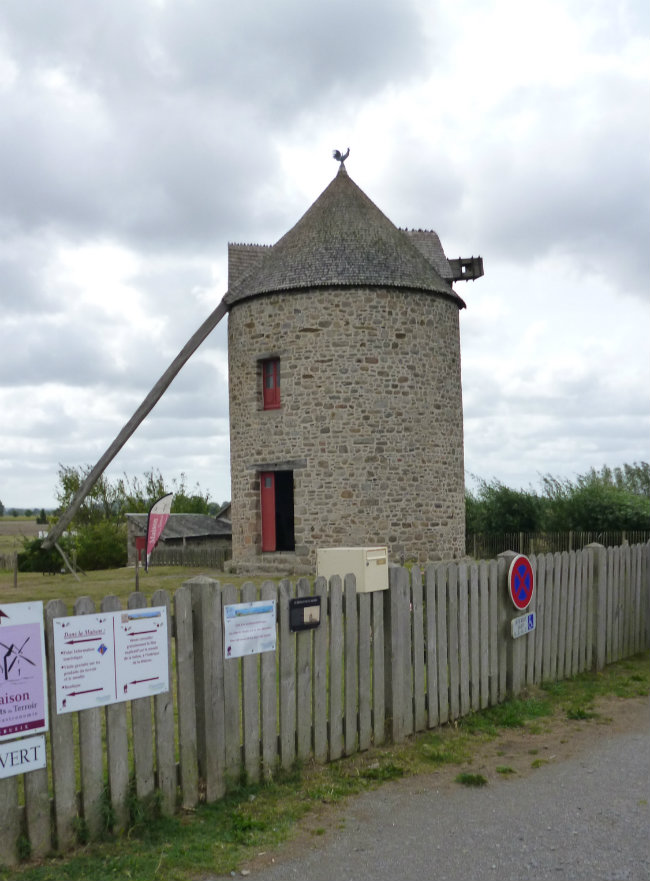
Windmill in Cherrueix. Photo: Marilyn Brouwer
We usually stop in Cherrueix, a quintessential French village with a bar/restaurant, general store and boulangerie, all facing the church in the village square. Two other bar/restaurants sit just back from the sea front which boasts a popular sand yachting school. A few hundred metres from the church the ‘train marin’– a tractor pulling along a blue and yellow open sided bus with big wheels– takes tourists onto the beach on a 2-hour trip to explore the cultivation of mussels far out in the bay.
On the way home, it usually rains– my husband of course is naturally to blame for bad weather. If at the same time I have also fallen off the bike driving over a tiny pebble, this is also my husband’s fault. Frizzy haired, bloody kneed, all I long for is a scalding bath, my hair straighteners and a very stiff drink.
The caravan looms ahead in the distance. No bath. No mini-bar.
But isn’t Brittany glorious?
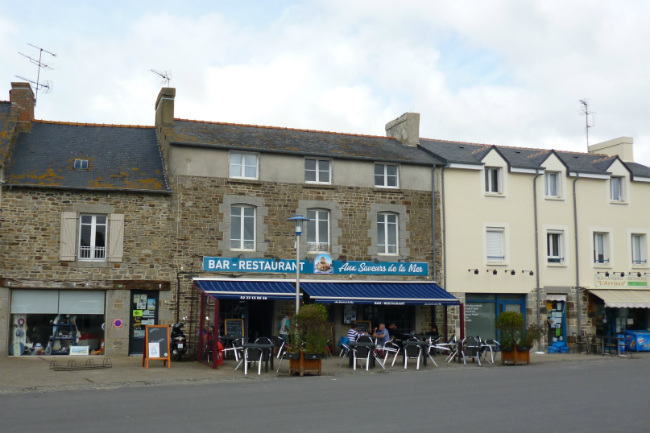
The village square in Cherrueix. Photo: Marilyn Brouwer
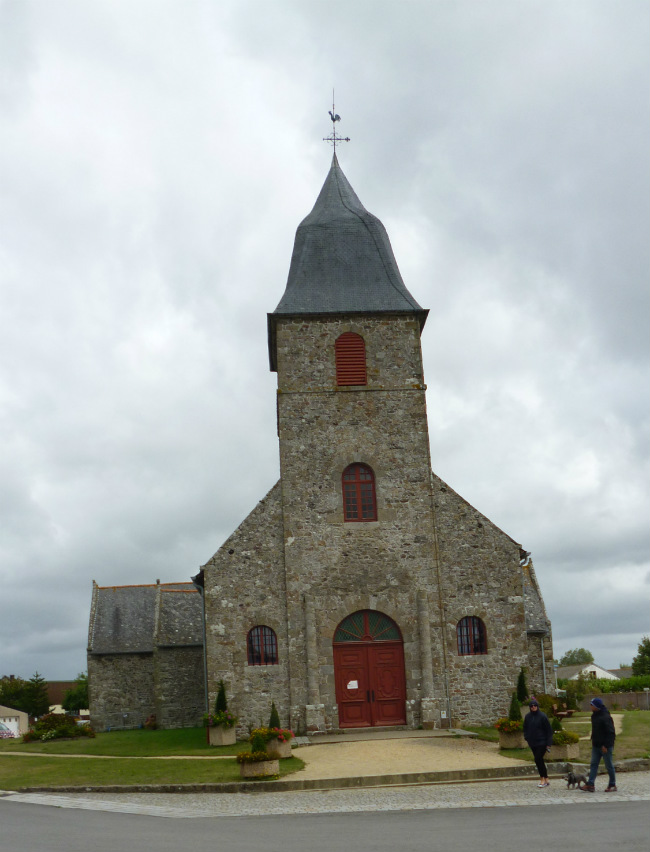
Church in Cherrueix. Photo: Marilyn Brouwer
Share to: Facebook Twitter LinkedIn Email
Leave a reply
Your email address will not be published. Required fields are marked *



